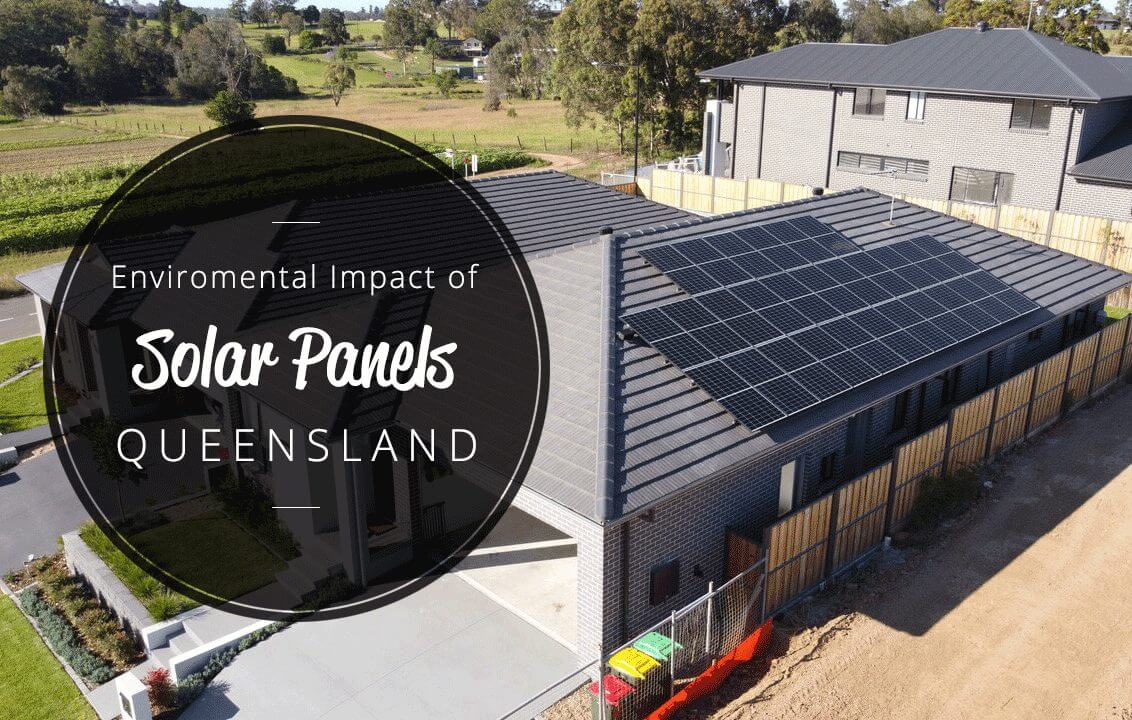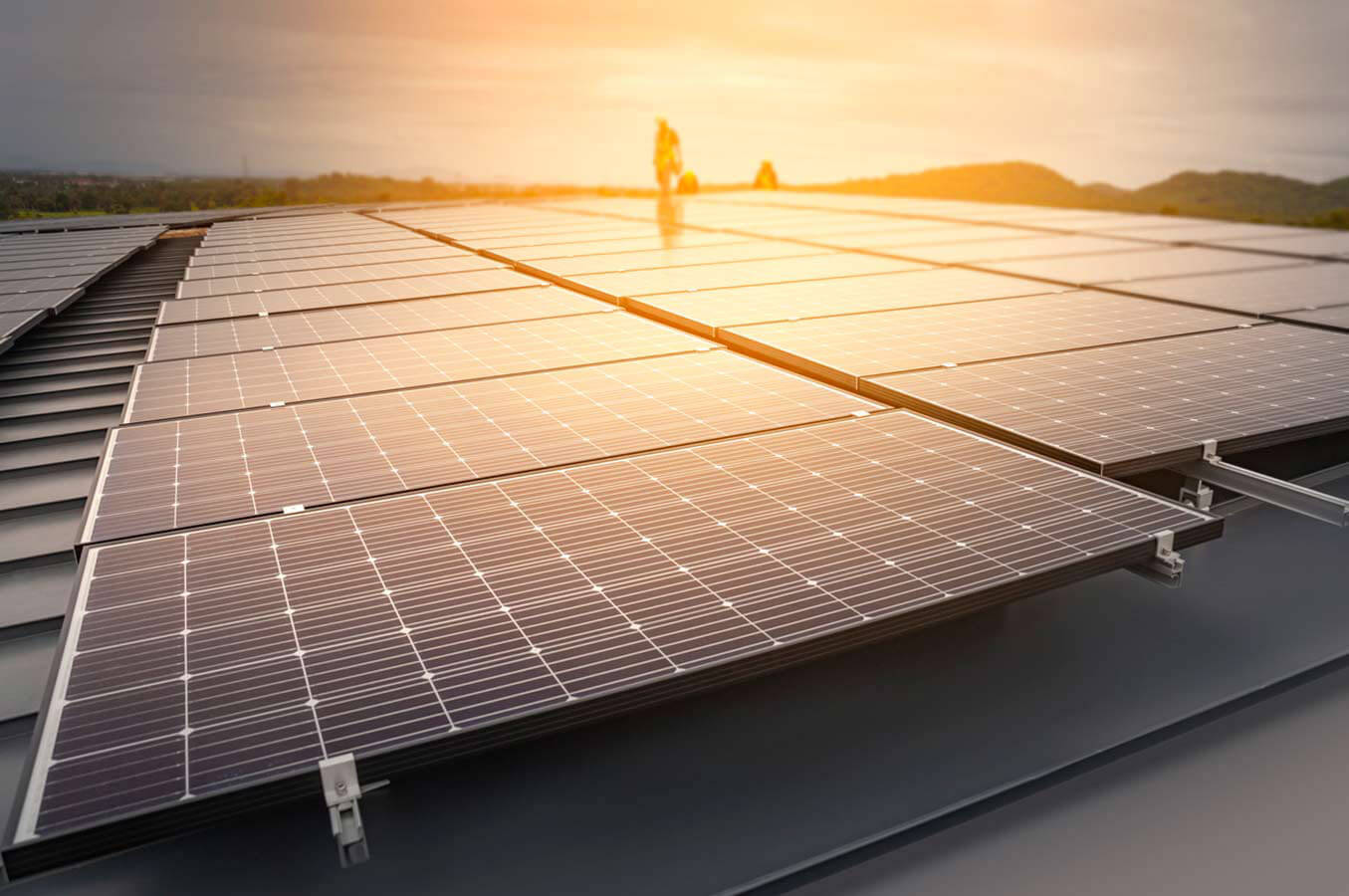Home The Environmental Impact of Using Solar Power in Queensland
The Environmental Impact of Using Solar Power in Queensland
Queensland, renowned for its sun-drenched days exceeding 300 annually, presents the perfect opportunity to embrace solar power. By opting for solar panels as a renewable energy source, you’re not only diminishing your environmental impact but also simultaneously cutting down on your power bills. Nonetheless, this prompts the inquiry: Does solar power live up to its frequently touted advantages? Specifically, what is the environmental effect of utilizing solar energy in Queensland?
Like any form of energy, solar energy has an impact on the environment. Some of the positive impacts of solar power include reducing greenhouse gas emissions and mitigating the effects of climate change. However, solar energy may still have a negative impact on land, air, and water, and the materials used to make solar PV cells may be hazardous to the environment.
Here, we will discuss the positive and negative environmental impacts of solar power in Queensland. We will also highlight the main pros and cons of solar energy.

Table of Contents
TogglePositive environmental impacts of using solar power in QLD
Clean renewable energy
Queensland’s renewable energy target is to achieve 50% renewable energy by 2030, 70% by 2032, and 80% by 2035. With solar power, a renewable energy source, the QLD state will be able to mitigate pollution and global warming. Solar power does not pollute the air or release harmful toxins that could cause health problems such as headaches, asthma, and cancer.
In a nutshell, solar power is a major placeholder in Queensland’s plan to reduce the state’s carbon footprint and deliver clean, safe renewable energy to its residents.
Carbon footprint
Queensland’s power grid is still mainly powered by coal and gas. Solar power is a clean, zero-emission source of electricity that can significantly reduce your carbon footprint. In fact, solar power can avoid one tonne of carbon dioxide for every 1 MWh of solar energy generated.
Also, according to PV magazine, a single solar PV panel can offset carbon dioxide emissions equivalent to what ten mature trees can offset.
Reduce gas emissions and global warming
Burning fossil fuels such as coal, natural gas, and crude oil can lead to significant air pollution. CO2 is one of the main gases produced during energy generation from fossil fuels and is a significant contributor to global warming.
Methane gas is also emitted during the burning of fossil fuels and petroleum. This gas lingers in the atmosphere, trapping excess heat and radiation. Methane is also a major contributor to global warming, which can then increase the risk of natural disasters and lead to increased droughts and famine.
Solar power is a natural, renewable energy that provides an environmentally friendly alternative to fossil fuels. Thus, solar reduces reliance on grid electricity, which is made from burning fossil fuels.
Water use
Burning fossil fuels causes massive pollution of groundwater and can affect rivers, lakes, and marine habitats. Hydropower relies on natural water bodies and rivers, which can potentially cause harm to natural ecosystems and limit water use by humans and animals.
Solar panels do not pollute water bodies and have little impact on water usage as they do not require regular cleaning and maintenance. This makes them one of the most environmentally-friendly sources of energy.
Plant and wildlife
Fossil fuel extraction has caused a global crisis of biodiversity loss, including habitat destruction and pollution.
Solar power protects plants and wildlife as it decreases deforestation, waste discharge, sinking land, water contamination, and any other activities that may lead to the destruction of biodiversity.
Negative environmental impacts of using solar power in QLD
We can all attest that solar panels contribute positively to the environment. However, solar power also has negative environmental impacts that cannot be overlooked.
The potential impacts and their scale largely depend on the solar power technology, which includes two broad groups: concentrating solar thermal plants (CSP) or photovoltaic (PV) solar cells.

Land use
Generating enough solar power to run Queensland homes would require a lot of panels and, in turn, a lot of land. The total land area required varies widely depending on the technology, the intensity of the solar resource, and the topography of the land.
For instance, installing a utility-scale PV system in QLD will require 3.5 to 10 acres of land per megawatt, while CSP projects require between 4 and 16.5 acres per megawatt.
Moreover, solar projects do not provide opportunities to share the land with agriculture compared to wind facilities. However, the impact on land use can be mitigated by installing utility-scale solar systems on lower-quality land like abandoned mining sites and brownfields. More so, smaller residential installations do not have a significant impact on land.
Air, soil and water
Installing large utility-scale solar power systems requires the clearing of massive areas of land. This can change drainage channels and cause soil erosion.
Also, if the plant uses a central tower collector system, lots of water will be required for cooling the system. The amount of water needed will depend on the plant’s design, location, and cooling system type.
The air quality can also be affected during the construction of solar plants. The particulates and pathogens released may end up in water bodies, thus causing water pollution.
Hazardous materials and chemicals
The solar PV cell manufacturing process involves the use of hazardous materials and chemicals, which are used to clean and purify the surface of semiconductors. These chemicals include nitric acid, sulfuric acid, hydrochloric acid, acetone, hydrogen fluoride, and 1,1,1-trichloroethane. The amount and type of chemicals used vary depending on the size of the silicon wafers and the amount of cleaning required.
The silicon dust produced during the manufacturing process may also be harmful to workers.
These chemicals can cause serious public health and environmental threats if not properly disposed of. Some of the materials can also be recycled to reduce the risk of dumping.
Energy demand
To produce solar panels, a significant amount of upfront energy will be required. The mining, manufacturing, and transporting of all the required materials will require lots of energy.
This means solar panel manufacture still relies on traditional fuels such as coal and natural gas that are burned at large scales. As we have already seen, conventional fuels cause huge negative environmental impacts.
Life-cycle global warming emissions
There are no global warming emissions associated with solar power. However, there are life-cycle emissions from the manufacturing process, transportation of materials, installation of the systems, and decommissioning and dismantling of solar panels.
The life-cycle emissions for PV systems range from 0.7 to 0.18 pounds of CO2 equivalent per kilowatt-hour.
Recycling
Where do solar panels go once they break or become decommissioned? Solar panel recycling has not become a major issue yet, as there are not enough solar panels to make the process worthwhile just yet. However, decades from now, solar panels will need to be replaced, which will lead to recycling-related issues.
Socioeconomics
Constructing solar farms can lead to massive changes in the area’s socioeconomics. For instance, building farms in remote regions leads to an influx of new jobs, which in turn require more housing and downstream services to accommodate the increasing population. If the solar plant is not sustainable, it could lead to ghost towns.
Advantages of solar energy in Queensland
Some of the advantages of installing solar PV panels in Queensland include the following:
Sustainability. Solar panels are a sustainable source of electricity compared to fossil fuels. In the near future, fossil fuel reserves will be depleted, while solar energy will be around for billions of years.
Lower environmental impact. Solar energy has a lower environmental impact compared to fossil fuels. It has inconsequential greenhouse gas emissions and does not have high water usage.
Energy independence. Solar power is here to help all interested homes and businesses in Queensland and across Australia lower their energy costs.
With solar power, you will reduce dependency on the electricity grid, and you will be able to enjoy free electricity once the system pays for itself. Solar power also helps states and countries gain energy independence.
Disadvantages of solar energy in Queensland
While solar panels have so many essential benefits, they also have a fair share of disadvantages, such as:
- High upfront costs. The initial installation cost of solar panels is relatively high. Luckily, the government offers financial incentives to help lower the financial burden of installing these systems.
- Intermittency. Solar panels do not work at night or on overcast days. This means you will need to draw electricity from the grid to power your home, so you will still have an electric bill at the end of the billing cycle.
- Solar battery storage systems are expensive. Solar energy storage is costly, and the more storage you need, the more expensive it gets. For instance, a typical 14 kWh Tesla Powerwall 2 solar battery costs about $12,500 on average. Larger systems can cost up to $30,000 and will need to be replaced after 15 years or sooner.
- They may not work on your roof type. Not every roof will work well with solar panels. If the roof orientation is off, i.e., your roof does not face the sun, you will not benefit much from solar panels. Roofing materials also matter when installing solar panels. Materials such as metal, tiles, and asphalt shingles make solar panel installation easier compared to other materials.
- Environmental impact. Solar panels contain many hazardous materials that can negatively affect the environment. If proper disposal is done, this may no longer be a problem in the future.
Compare Solar Panel Quotes
Table of Contents
Toggle









